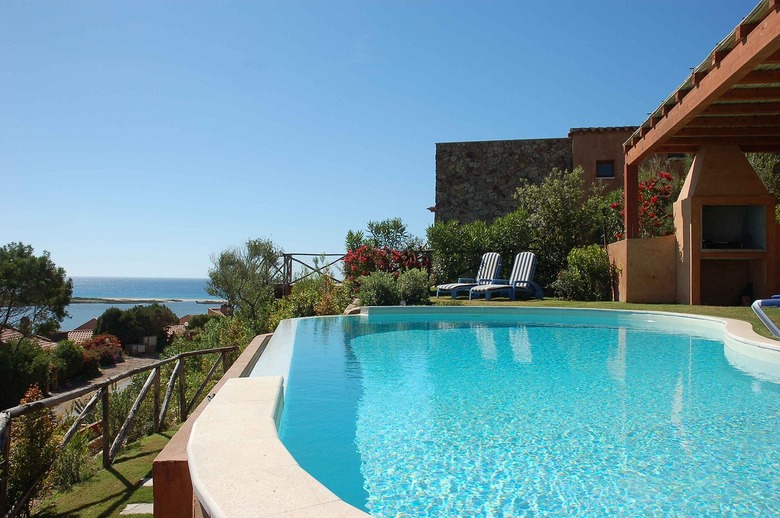When To Super Chlorinate A Saltwater Swimming Pool
The sanitizer in a saltwater pool is chlorine, exactly as it is in most conventional pools. The difference is that a saltwater pool has an electrolytic generator that produces the chlorine from filtered salt, which eliminates the need to add chlorine manually. Some generators have a setting that increases chlorine production for super chlorinating, and if your pool has one, you should employ it after periods of heavy use, after a rainstorm and any time the pool water turns cloudy. This is not the same as shocking, which you should do if you smell chlorine or if an algae problem develops. You shock a saltwater pool in the same way you shock a conventional one.
Using the Super Chlorinate Feature
Using the Super Chlorinate Feature
A saltwater chlorine generator typically runs anywhere from 20 to 50 percent of full capacity, depending on the size of the pool, the size of the generator and the climate. You can usually operate your generator at the lowest capacity when the weather is cool, assuming your generator is properly sized for the pool's volume. In warm climates–or on hot days–the generator needs to supply more chlorine to keep the pool clean, so you need to use a higher setting.
When you select the super chlorinate feature, the generator runs at 100 percent capacity, raising the free chlorine level between 5 and 7 parts per million, as opposed to the normal concentration of 1 to 3 ppm. This is usually enough chlorine to clear up moderate cloudiness, but because the chlorine gets released slowly, it won't kill an algae growth or eliminate the chlorine smell from chloramines. For that, you usually have to shock the pool by quickly raising the free chlorine concentration to 10 ppm or more, using pool shock.
The super chlorinate feature is convenient, and it helps prevent problems like algae, but using it comes at a price. Because the generator has to work overtime to super chlorinate, it wears out faster. It's best to use this feature only when the water is cloudy or you've just had a rainstorm or a party when lots of people were in the pool. Otherwise, keep the generator running at a capacity sufficient to keep a normal free chlorine concentration, and no more.
When to Shock
When to Shock
Severely cloudy water, green, brown or black coloration in the water, or a discernible chlorine odor are three indications that the pool water needs to be shocked. Because it releases chlorine slowly, the super chlorinating feature on a saltwater generator won't take care of these problems. Instead, you have to quickly raise the chlorine level using pool shock, pool chlorine or liquid bleach. You do this to oxidize the water, which breaks apart the chloramines causing the chlorine odor while it kills algae and bacteria.
How to Shock a Saltwater Pool
How to Shock a Saltwater Pool
Before you add chlorine, it's important test the pH and add an acid or base–if necessary–to bring it within a range from 7.2 to 7.6, or the chlorine shock won't be effective. You should also test the alkalinity, which should be in a range from 120 to 150 ppm in a saltwater pool. If the alkalinity and pH are high, bring them down using muriatic acid or sodium bisulfate. If they are low, raise them with baking soda or soda ash.
Calcium hypochlorite shock quickly raises the chlorine concentration, and you typically need a 1-pound bag to shock a 10,000-gallon pool. If you have a severe algae problem, double-shock by doubling the dosage. Before adding the shock, brush the sides and bottom of the pool to free the algae and suspend it in the water where the chlorine can reach it.
Shock the pool in the early evening to prevent the chlorine from immediately dissipating in the sun. Turn on the circulation pump, and then broadcast the powder over the surface or dissolve it in water and pour it into the side of the pool. Let the pump run for at least eight hours after shocking, and wait for the chlorine level to fall below 5 ppm before anyone goes in the water.
